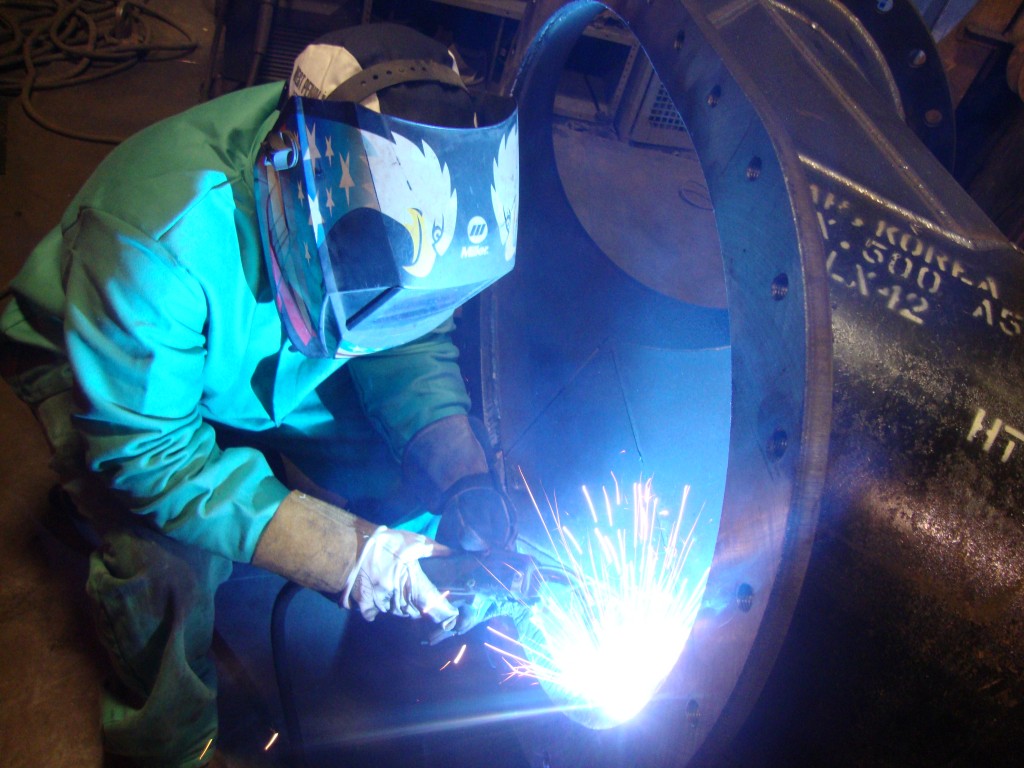Arc Welding
The process begins with a device that gives off an electric current.
This device can differ greatly from process to process yet it always enables electric
current to move through materials that without the device, would be considered non-conductive.
It is called ‘arc welding’ because an electrical current is created between the welding device and
the materials to be welded which at times gives an arch like appearance. The first basic form of
arc welding was invented in the year 1802.
This device can differ greatly from process to process yet it always enables electric
current to move through materials that without the device, would be considered non-conductive.
It is called ‘arc welding’ because an electrical current is created between the welding device and
the materials to be welded which at times gives an arch like appearance. The first basic form of
arc welding was invented in the year 1802.
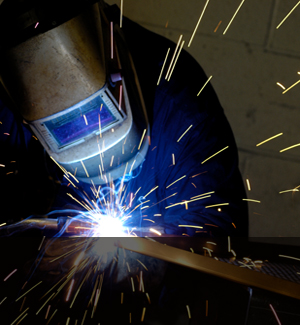
Electroslag Welding

Electroslag is a generally fast welding process used to join large materials
such as thick steel plates. These plates or materials are usually arranged in a vertical position, as
the Electroslag weld is designed to weld at this angle without causing distortion to the welder. The name
‘Electroslag’ was derived from the use of water filled copper areas within the device, which were included
and designed solely to prevent melted ‘slag’ from pouring into other areas as it liquefied.
such as thick steel plates. These plates or materials are usually arranged in a vertical position, as
the Electroslag weld is designed to weld at this angle without causing distortion to the welder. The name
‘Electroslag’ was derived from the use of water filled copper areas within the device, which were included
and designed solely to prevent melted ‘slag’ from pouring into other areas as it liquefied.
Flux-Cored Welding
Flux-cored welding was created and put into use in the early years of the 1950’s.
Its purpose was to give another option to the popular use of ‘stick welding’. The Flux-Cored process is mostly
used for projects that require fast speed as it is an automatic form of welding. Many construction workers use
this process on the job because of the speed and the ability to use flux-cored welding in multiple situations
on various materials.
Its purpose was to give another option to the popular use of ‘stick welding’. The Flux-Cored process is mostly
used for projects that require fast speed as it is an automatic form of welding. Many construction workers use
this process on the job because of the speed and the ability to use flux-cored welding in multiple situations
on various materials.

Gas Tungsten
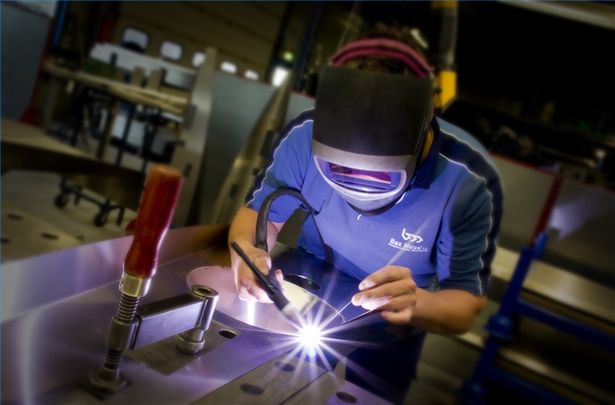
Arc Welding is considered to be one of the most difficult and time consuming of welding
processes used today (along with Plasma Arc Welding). This is because it requires a great amount of focus
and skill due to the small area of space between the ’arc’ of the flame and the material being welded.
Usually, small strips of metal that do not contain much iron are welded with this process. Though it is difficult,
it produces extremely strong high quality welds when done correctly. Welders manufacturing bicycles and aircraft,
both commercial and military, use Gas Tungsten-Arc Welding often while many other welders will never come across this
process.
processes used today (along with Plasma Arc Welding). This is because it requires a great amount of focus
and skill due to the small area of space between the ’arc’ of the flame and the material being welded.
Usually, small strips of metal that do not contain much iron are welded with this process. Though it is difficult,
it produces extremely strong high quality welds when done correctly. Welders manufacturing bicycles and aircraft,
both commercial and military, use Gas Tungsten-Arc Welding often while many other welders will never come across this
process.
MIG (Metal Inert Gas) Welding
Metal Inert Gas Welding is a process of welding that uses a gas to shield the weld metal.
The gas keeps the metal being welded from being effected from natural elements in the environment, such as oxygen. This allows
the welder to operate at a continuous rate, making the process fairly quick. Operation of the equipment does not require an
extreme level of skill by welders, however, the equipment used in MIG Welding can only be used indoors due to the gas involved
in the welding process.
The gas keeps the metal being welded from being effected from natural elements in the environment, such as oxygen. This allows
the welder to operate at a continuous rate, making the process fairly quick. Operation of the equipment does not require an
extreme level of skill by welders, however, the equipment used in MIG Welding can only be used indoors due to the gas involved
in the welding process.
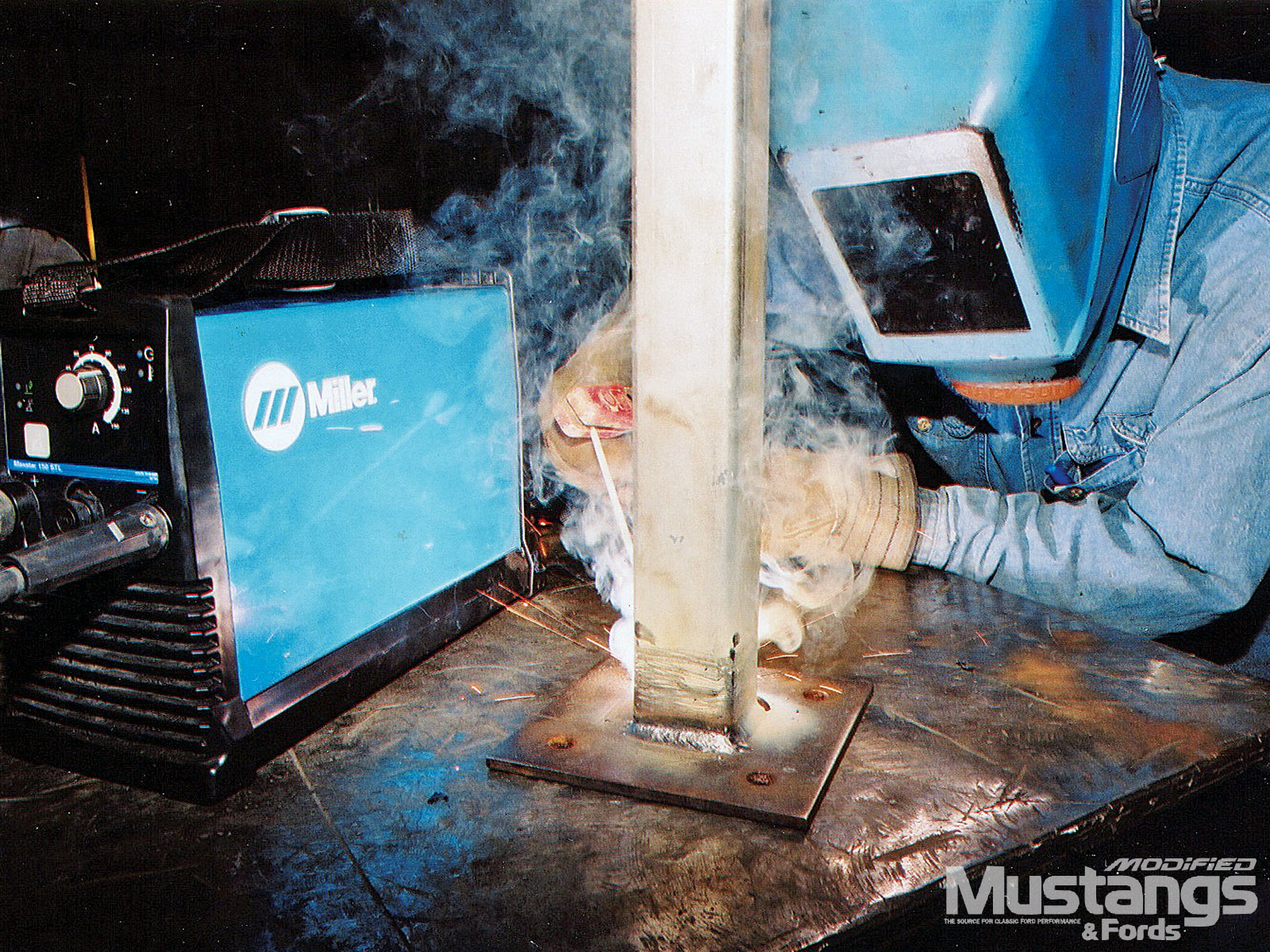
Plasma Arc Welding
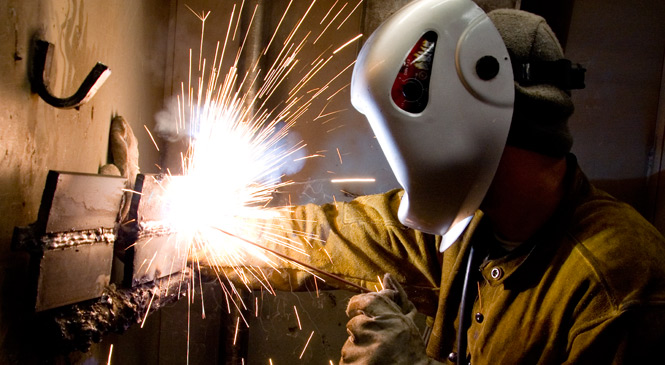
Plasma Welding is very much like that of Gas Tungsten-Arc Welding (GTAW). The two processes are often
compared because they basically work in the same fashion, only using a different type of torch. This method was developed in
1954, though even today, it is still being improved upon. Plasma Welding also requires more concentration than GTAW because of
the smaller arc and precision of the weld. In Plasma Welding, the electrical current is passed through an extremely small
nozzle which passes through the protective gases, enabling extreme accuracy when welding small areas. Plasma Welding can
heat metals to very extreme temperatures which can result in deeper welds.
compared because they basically work in the same fashion, only using a different type of torch. This method was developed in
1954, though even today, it is still being improved upon. Plasma Welding also requires more concentration than GTAW because of
the smaller arc and precision of the weld. In Plasma Welding, the electrical current is passed through an extremely small
nozzle which passes through the protective gases, enabling extreme accuracy when welding small areas. Plasma Welding can
heat metals to very extreme temperatures which can result in deeper welds.
Shielded-Metal Arc Welding
This process is known to be the most popular and widely used processes in welding today.
The first form of SMAW was created in 1938 but the process and equipment continues to undergo upgrades. It is a manual welding
process that is very simple and inexpensive to operate. The results often are not as ‘neat’ as other methods and molten splatter
is a common occurrence. Stick welding is mostly used by construction welders working on steel structures and other industries
that require welding but do not have large budgets.
The first form of SMAW was created in 1938 but the process and equipment continues to undergo upgrades. It is a manual welding
process that is very simple and inexpensive to operate. The results often are not as ‘neat’ as other methods and molten splatter
is a common occurrence. Stick welding is mostly used by construction welders working on steel structures and other industries
that require welding but do not have large budgets.
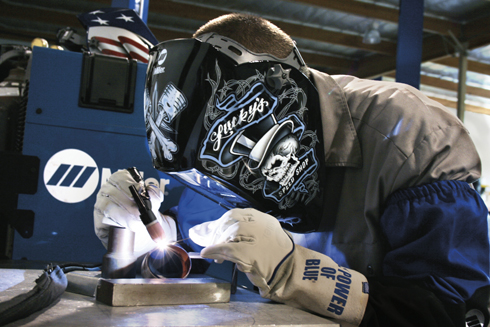
Submerged Arc Welding
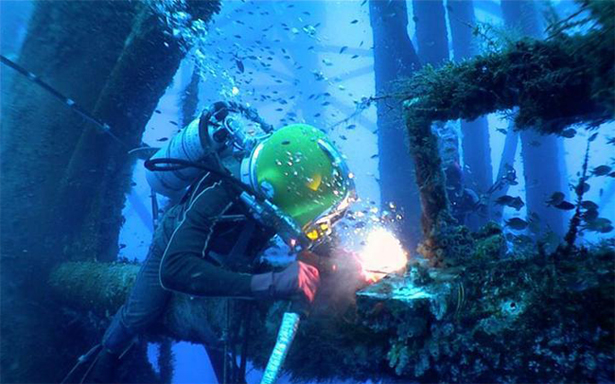
The Submerged Arc Welding process can only be used properly on materials containing high iron contents,
such as stainless steel. The device used in this process can be automatic or semi-automatic making it a fairly fast welding process.
While it is a fast process, the electrical arc must constantly be covered by ‘flux’ in order to protect the metal from the atmosphere
during the welding process. This cover also prevents any welding spatter which makes it safer for welders than some of the other forms
of welding.
such as stainless steel. The device used in this process can be automatic or semi-automatic making it a fairly fast welding process.
While it is a fast process, the electrical arc must constantly be covered by ‘flux’ in order to protect the metal from the atmosphere
during the welding process. This cover also prevents any welding spatter which makes it safer for welders than some of the other forms
of welding.
TIG (Tungsten Inert Gas) Welding
Tungsten Inert Gas welding is much like the process of Metal Inert Gas (MIG) welding. The main
difference between these two forms of welding is that TIG uses a tungsten current form, while MIG uses a metal electrode. Because TIG
uses tungsten, it requires an additional filler placed inside the welding device as tungsten does not melt in the welding process.
Tungsten is unique as it can be heated to a higher temperature before melting than all other metals. Tungsten Inert Gas Welding is
usually used in industries that work with stainless steel.
difference between these two forms of welding is that TIG uses a tungsten current form, while MIG uses a metal electrode. Because TIG
uses tungsten, it requires an additional filler placed inside the welding device as tungsten does not melt in the welding process.
Tungsten is unique as it can be heated to a higher temperature before melting than all other metals. Tungsten Inert Gas Welding is
usually used in industries that work with stainless steel.
